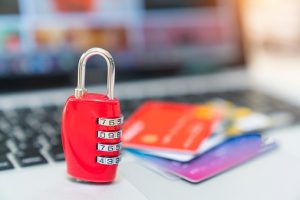The Ins and Outs of Identity Theft


August is Fraud Awareness Month – the perfect time to spark conversations about how vital fraud prevention is to you personally and to society as a whole. In late 2017, the credit monitoring service Equifax experienced a significant data breach. After all was said and done, 147.9 million consumers were affected, most having their Social Security Number revealed. This rupture of sensitive data has put consumers at a heightened risk for identity theft.
According to a 2018 survey by The Harris Poll, approximately 60 million Americans have been victims of identity theft. That same survey indicates nearly 15 million consumers experienced identity theft in 2017. With data breaches and phishing attacks becoming more and more common, the question on many of our Client’s minds is: what can we do to protect ourselves? In this space, we share information from industry experts on the methods that identity thieves use to steal your personal information and what you can do to make yourself a less attractive target.
How do identity thieves obtain your personal information?
Identity thieves continue to grow stronger at stealing sensitive data such as Social Security Numbers, driver’s licenses, birth dates, and credit card information. Once they have your information, they can apply for credit cards, open bank accounts, drain bank accounts, take out loans, file tax returns, apply for government benefits, and/or receive medical services. These actions can destroy your credit, cost ample amounts of money, and take countless hours to make your life whole again.
Below are the top methods identity thieves utilize to get ahold of your information according to the Center for Identity Management and Information Protection:
- Data breaches: Major organizations are big targets for thieves because they hold massive amounts of consumer data. When data leaks from these organizations, the damage is extensive and affects millions of consumers.
- Phishing: Scammers often use emails, telephone calls, or text messages to fool consumers into providing personal information by pretending to be someone you trust, such as a bank, the IRS, or major retailer.
- Hacking: Computers and smartphones are at risk of being hacked. Cybercriminals can install malware that uses keyloggers and screenloggers to record your keyboard strokes and the sites you visit leaving your app logins and website passwords vulnerable.
- Dumpster Diving: Yes, you read that right – thieves look through garbage to find bills, checks, receipts, and credit card offers containing personal information.
How can I make myself a less attractive target?
Being proactive and staying informed are great ways to stay protected against fraud. Below are twelve proactive tips to help you fight identity thieves as shared by The Federal Trade Commission and consumer.gov:
- Credit Freeze or Lock: Credit locking or freezing is considered the gold star in Identity Protection. As of September 21, 2018, there is no cost to freeze or unfreeze your credit file. When your credit is frozen, only the companies that have extended credit to you can view your credit.
- Establishing Fraud Alerts: A fraud alert notifies creditors to contact you to confirm your identity before opening new accounts. To establish fraud alerts, simply call any one of the three major credit bureaus listed below. As soon as one credit bureaus confirms your fraud alert, the others are notified to place fraud alerts, as well. These alerts are good for one year at which time they can be renewed again.
- Enroll in a Credit Monitoring Service: Credit monitoring services, such as IdentityForce, are great resources because they monitor your personal information in areas beyond the credit bureaus and notify you if your information is being misused.
- Review Your Credit Report: Reviewing your credit report ensures the information on file with the credit bureaus is accurate. Since you’re entitled to one free credit report every year from each of the three major credit reporting bureaus, request one report every four months to monitor your information throughout the entire year. To request yours, visit annualcreditreport.com. Identity monitoring services, like IdentityForce, also often provide credit monitoring services that can help you keep on top of your credit scores in between reviewing any reports.
- Opt Out from Receiving Pre-Approved Credit Offers: Identity thieves snatch intercept new credit card offers sent via mail. To discontinue the delivery of pre-approved credit cards, you must opt out of prescreened offers. To do this, call (888) 567-8688 or go online at https://www.optoutprescreen.com.
- Use a Shredder: It is the best practice to shred documents with sensitive information in them before throwing them out. If you don’t have immediate access to a shredder, you can sometimes find community shredding events in your local area.
- Don’t Download Unknown Software: Avoid opening unknown attachments or using software downloads from unknown websites. These programs may include spyware or malware which act as a portal for phishers and hackers to take your information.
- Be Aware of Common Phishing Techniques: Watch out for emails, links, texts, phone calls or mail asking for your personal information. Never give personal information to people who contact you and ask for it.
- Password Protection: The most recent reports on best practices for passwords is simple – the longer the better. At Yeske Buie, it is our policy to use passwords that are 18 or more characters. Additionally, Two-Factor Authentication is a great way for implementing another security “hurdle” for phishers and hackers to have to jump over in order to obtain your information. These password management strategies can make it more difficult for hackers to crack your online account passwords and therefore make you a less desirable target.
- Practice Browser Safety Habits: Using encrypted sites with “https” in the URL is more secure than browsing non-encrypted sites. Be aware of the differences and take extra precaution when using non-encrypted sites.
- Limit Social Media Data: Don’t leave personal details, such as your birthday, place of birth, family members’ full names or addresses on your social media. Strengthen your privacy settings and be cautious about whom you accept as a connection.
- Secure Your Phone: Lock your phone with a password or fingerprint, turn off Bluetooth when you’re not using it, and be wary when connecting to a public Wi-Fi, and be cautious when downloading apps which could contain malware.
If you have an identity protection service, such as IdentityForce, contact them immediately to notify them and get them working on your case. We also encourage you to contact us if you learn that your information has been stolen so that we can act as an additional layer of security by monitoring your accounts for suspicious activity – as we like to say, we want to be your first call!
When it comes to the theft of personal information, the sooner you detect a problem, the sooner it can be fixed. A combination of awareness and prevention is the best way to protect yourself against identity theft. And finally, rest assured that we at Yeske Buie are always researching industry best practices and training our team so that we are doing our part in keeping your information safe.
